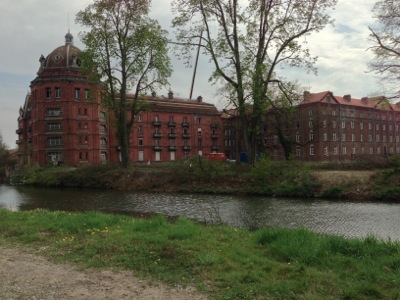
Here is an introduction to the Familistère, or Social Palace, an industrial and communal residential complex in Northern France based on 19th century utopian socialist ideals.
Originally trained as a locksmith, Jean-Baptiste Godin started making iron cast stoves in 1840. In 1842 he discovered the Fourierist ideal of associating capital, talent and labour. As his factory prospered, his professional success went hand in hand with his social and political commitment to fundamental reform of society. His intention was to improve housing for workers, but also ‘production, trade, supply, education, and recreation’, all the facets of life of a modern worker. As a result from 1846 he developed the Familistère as a self-contained community within the town of Guise.

The full site with the foundry was about eighteen acres, on either side of the River Oise. In addition to a large factory for cast-iron manufacture, three large buildings, each four stories high, were constructed to house all the workers and their families, with each family having apartments of two or three rooms. The main building consisted of three rectangular blocks joined at the corners. Each of these blocks had a large central court covered with a glass roof under which children could play in all weather.

At the back of the main block was a nursery, a pouponnat (or infant school) for toddlers and children up to age four, the bambinat for children 4-6. Opposite the main block was a building containing a theater for concerts and dramatic entertainments, and a primary school for children over six
A separate block, known as the economat, contained various shops, refreshment and recreation rooms of various kinds, and grocery stores for the purchase of basic goods. They were purchased at wholesale prices and sold with little mark-up, with workers manning the shops. There were also communal laundry rooms, baths and swimming pool, in a separate building on the opposite bank, where water was heated by the factory.

By 1872, when a correspondent from the American Harper’s Magazine visited the complex, 900 workers (including women) and their families were housed there, for a total population of about 1200.
The experience lasted for just over 100 years but in 1968 the cooperative association for the Social Palace was dissolved, and the apartments were sold at moderate prices. Nowadays the site is open for visitors and tours. On May 1st the town organises celebrations and the site can be visited for a minimal sum.
(written with the help of Wikipedia)
